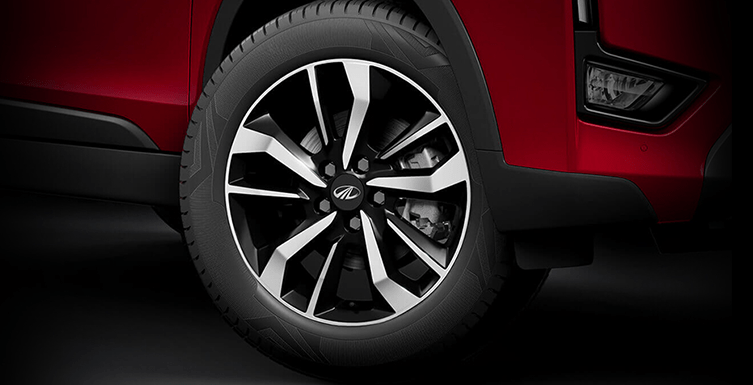All About Changing the Tyres on Your SUV | Mahindra Auto

There isn't a fixed standard time to change your SUV tyres. There are a lot of factors that determine its lifespan — the manufacturer, the design of the wheel, the driver’s habits, the road conditions, the climate, and the efforts put into maintenance. But, here's how to check if your SUV need a tyre change:
- Make Note of Tread Wear The pattern of grooves moulded on your tyre is the tread pattern. Look at the tread pattern carefully and you will see small bridges between the grooves, these are called ‘tread wear bars' which are present on most tyres. As and when the tyre wears, these tread bars will become even with the tyre's tread. Also, check for irregular tread wear. If the tread wear is uneven then it might indicate misalignment of the wheels and is a clear sign that you should take your car for servicing.
- Check for abnormalities in the sidewall Bulges or "bubbles" on the sidewall of the tyre indicate that the hard internal frame of the tyre is damaged. Driving through potholes or low tyre pressure can damage the frame. Continuing to drive in this condition is extremely dangerous and you should change the tyre immediately, regardless of the tread status.
- Use Tread Depth Indicator Or Gauge TThere is a tool called the tread wear depth indicator which helps you detect tread wear. If you don't already own one, you can even buy them online. There are digital indicators as well as mechanical ones. It's cheap and easy to use.
- Vibrations In The Steering Wheel Pay attention to the feel of the tyres when you drive your Off Road SUV.If your tyres are worn unevenly, you will feel slight vibrations in the steering wheel. You should rebalance the tyres at this point. If the problem continues, the tyre should be replaced.
-
Dry rot check-up
If you see tiny white cracks appearing on the tyre, it means the rubber is breaking down. Such tyres can fall apart, and need immediate change. Here are some tips to avoid damage:
- Proper driving. Don't accelerate suddenly and don't apply hard breaks
- Regular air pressure checks
- Balance the tyres after they are installed
- Don't mix tyre types
- Always use tyres from the same manufacturer




































